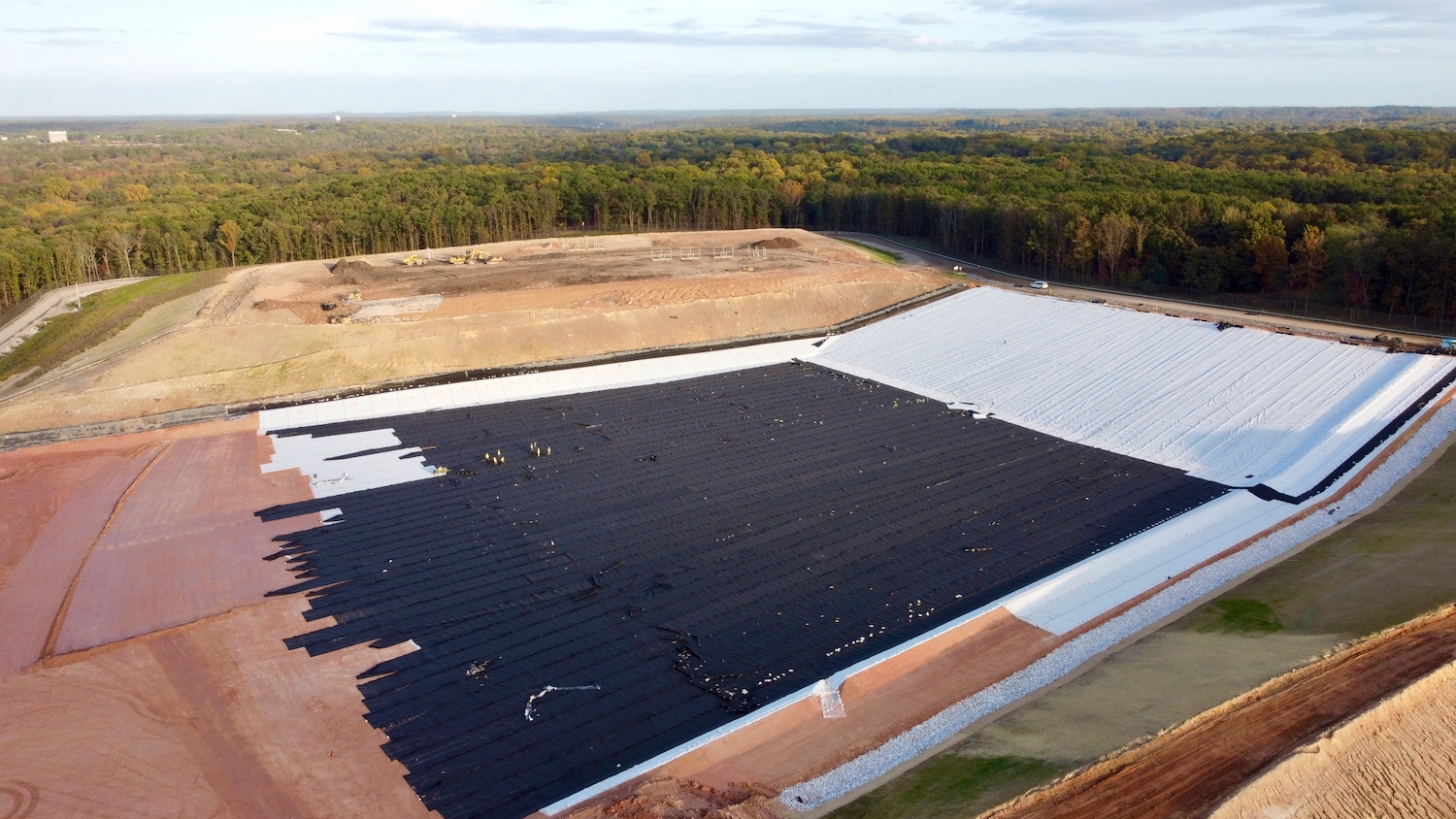Millersville Landfill


The Millersville Landfill and Resource Recovery Facility, the only landfill in Anne Arundel County spanning 525+ acres, has made tremendous progress towards greater efficiency and longevity of their facility. Since implementing the county-wide recycling campaign in 2008, the landfill boasts an increase in the county’s recycling rate from 31% to 45% in this timespan. This has been accomplished through public collection and waste diversion, in addition to relocating and reusing material that shouldn’t be occupying valuable landfill space. These measures have gone a long way towards maximizing the landfill’s lifetime.
Hallaton Environmental Linings recently assisted with the expansion of Cell 9, installing a liner system for a new sub-cell. This expansion was completed in February of 2021 and accounts for 15 of the 85 acres that comprise Cell 9. Construction for this second phase of Cell 9 began in February of 2020 under a county-backed improvement program wherein Hallaton’s crew worked with Allan Meyers, Inc., the General Contractor hired to manage the project.
The materials used included GCL below the sump and as a mid-layer between two layers of geocomposite and white textured 60 mil HDPE geomembrane. The textured geomembrane that the engineer specified for this project ensured that the necessary friction, drainage and durability requirements were met, while the white color provided additional resistance to the UV light and high temperature fluctuations that geosynthetic lining is often exposed to during construction. Because white liner reflects sunlight rather than absorbing and distributing the heat that black liner often does, which creates material expansion and contraction, the result is a containment solution that lays as flat and evenly as possible. This helps to maximize landfill volume and reduce the possibility of wrinkles that could result in leaks down the road. The layers of GCL provide an extra line of defense against potential contaminants.
Finally, a temporary rain cover was placed over the main areas of the cell to collect and redirect clean rainwater towards a drainage area, rather than having it contribute to leachate volume that requires expensive removal and/or on-site treatment. Thanks to the measures taken by the county to help maximize the landfill’s lifetime, and the protection of geosynthetic containment systems like this one, Cell 9 is expected to remain active through 2048.